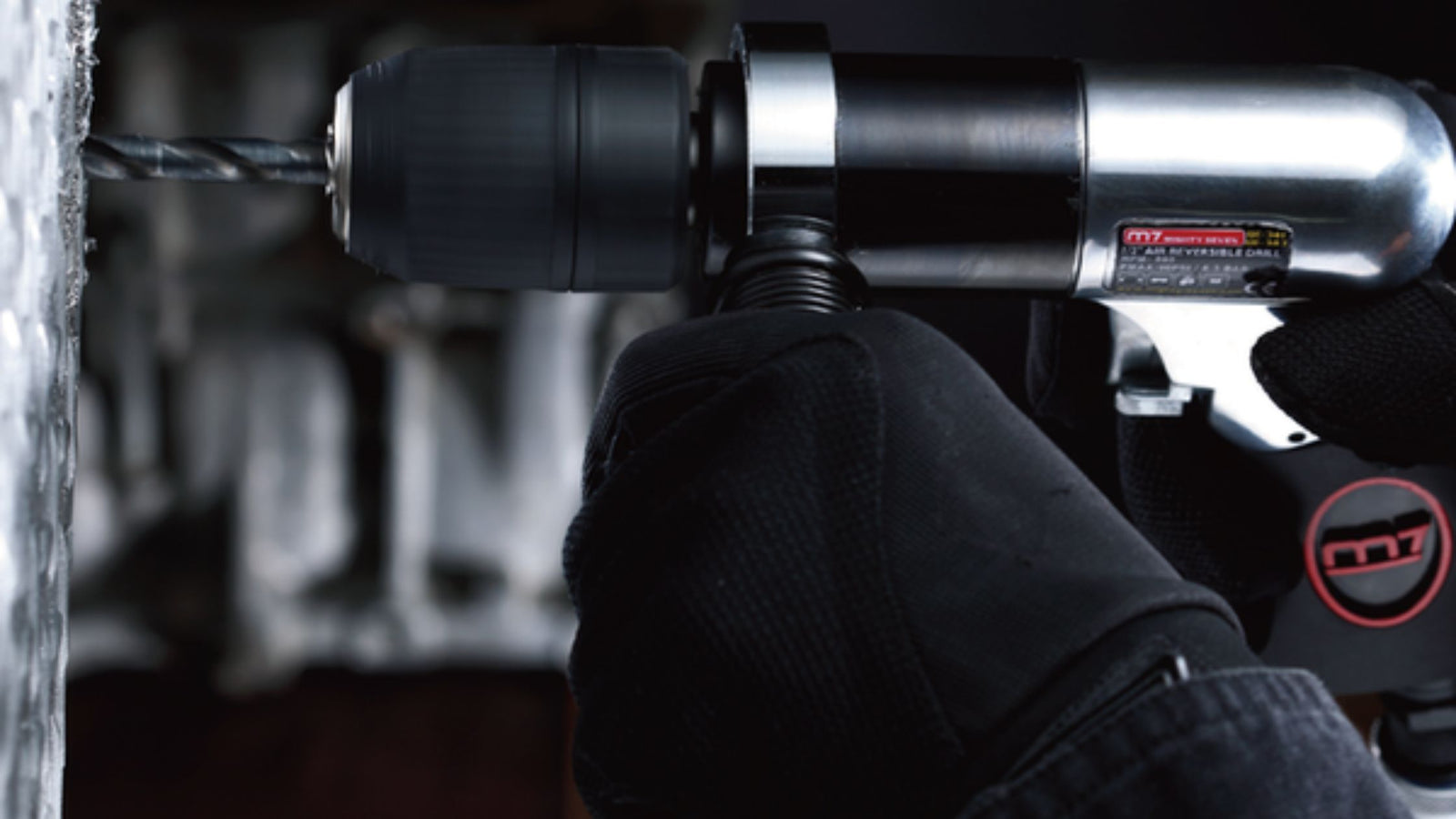Need Some Help? 0161 223 1843
Need Some Help? 0161 223 1843

December 09, 2023 4 min read
Pneumatic drills, commonly referred to as air drills, operate using a fascinating mechanism that harnesses the power of compressed air. Here's an extended and rephrased explanation of their working principle, suitable for a plagiarism check:
Source of Power - Compressed Air: The core of a pneumatic drill's operation lies in its connection to an air compressor. This compressor plays a crucial role by supplying high-pressure air, which is the primary energy source for the drill.
Activation via Air Flow: The user activates the drill by pressing its trigger. This action opens an internal valve, which then channels the compressed air from the compressor into the drill's mechanism.
Transformation of Energy: Inside the pneumatic drill is a specialized motor, typically a pneumatic rotary motor. This motor is designed to convert the kinetic energy of the flowing air into mechanical rotation.
Drill Bit Motion: The rotary motion generated by the motor is then transferred to the drill bit. This transfer of motion is what enables the drill bit to rotate at high speeds, a critical aspect of the drilling process.
Execution of Drilling Work: With the drill bit in rapid rotation, the drill can then be applied to a surface for various tasks such as drilling holes or chipping away at materials, depending on the type of drill bit used.
Disposal of Used Air: After the air has passed through the motor and contributed to the drilling action, it is expelled from the drill through an exhaust system. This expulsion not only disposes of the used air but also aids in cooling the drill, which is particularly useful during extended periods of operation.
Pneumatic air drills, also known as air-powered drills, come in various types to suit different applications and requirements. Here are some common types of pneumatic air drills:

Straight Air Drill:

Angle Air Drill:

Reversible Air Drill:
Low-Profile Air Drill:

Pistol-Grip Air Drill:

Keyed Chuck vs. Keyless Chuck:
Specialised Air Drills:

Their primary benefits include:


As with most things, you get what you pay for but a general piece of advice i would give is quality lasts longer. A lot of the cheaper end of air tools are manufactured in China and the production quality issues with then are well known but if your only using occasionally then they may be good enough for you. Professional air tools are made in UK, Europe, Taiwan and the USA but theo do come with a cost premium. You pays your money you takes your choice.
Comments will be approved before showing up.